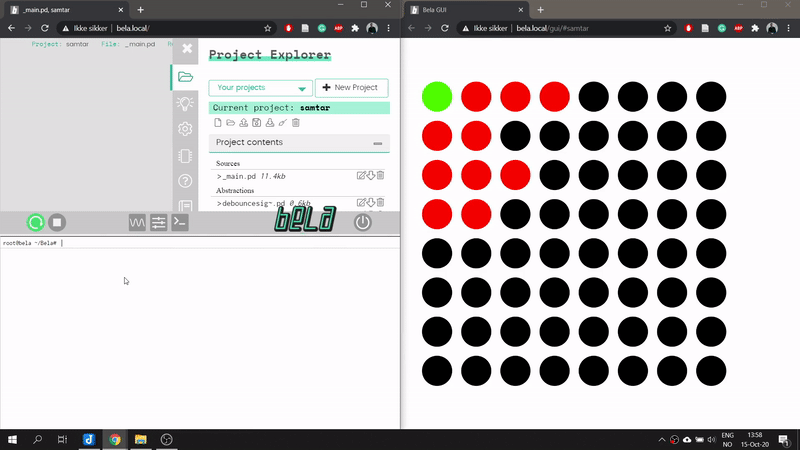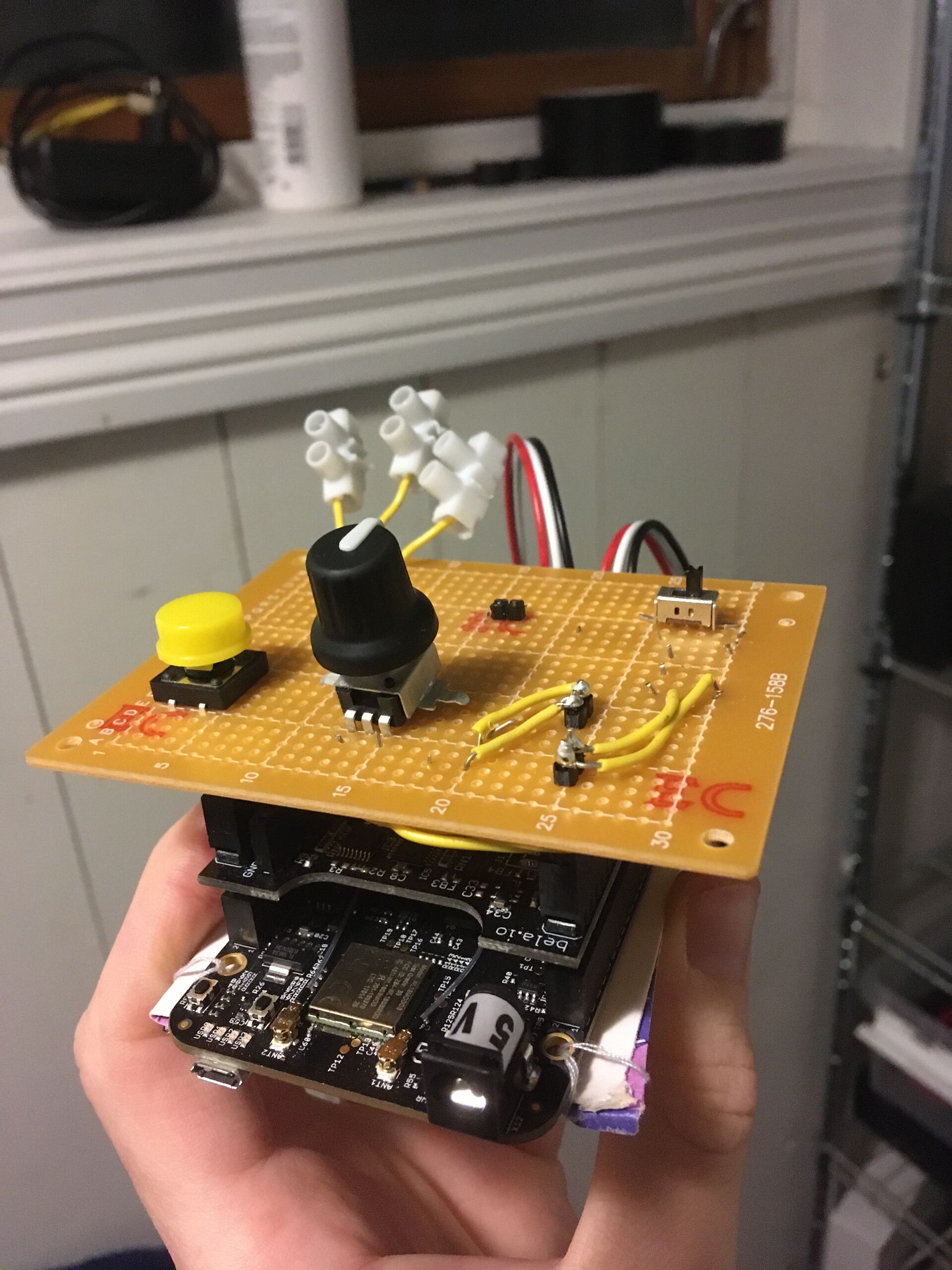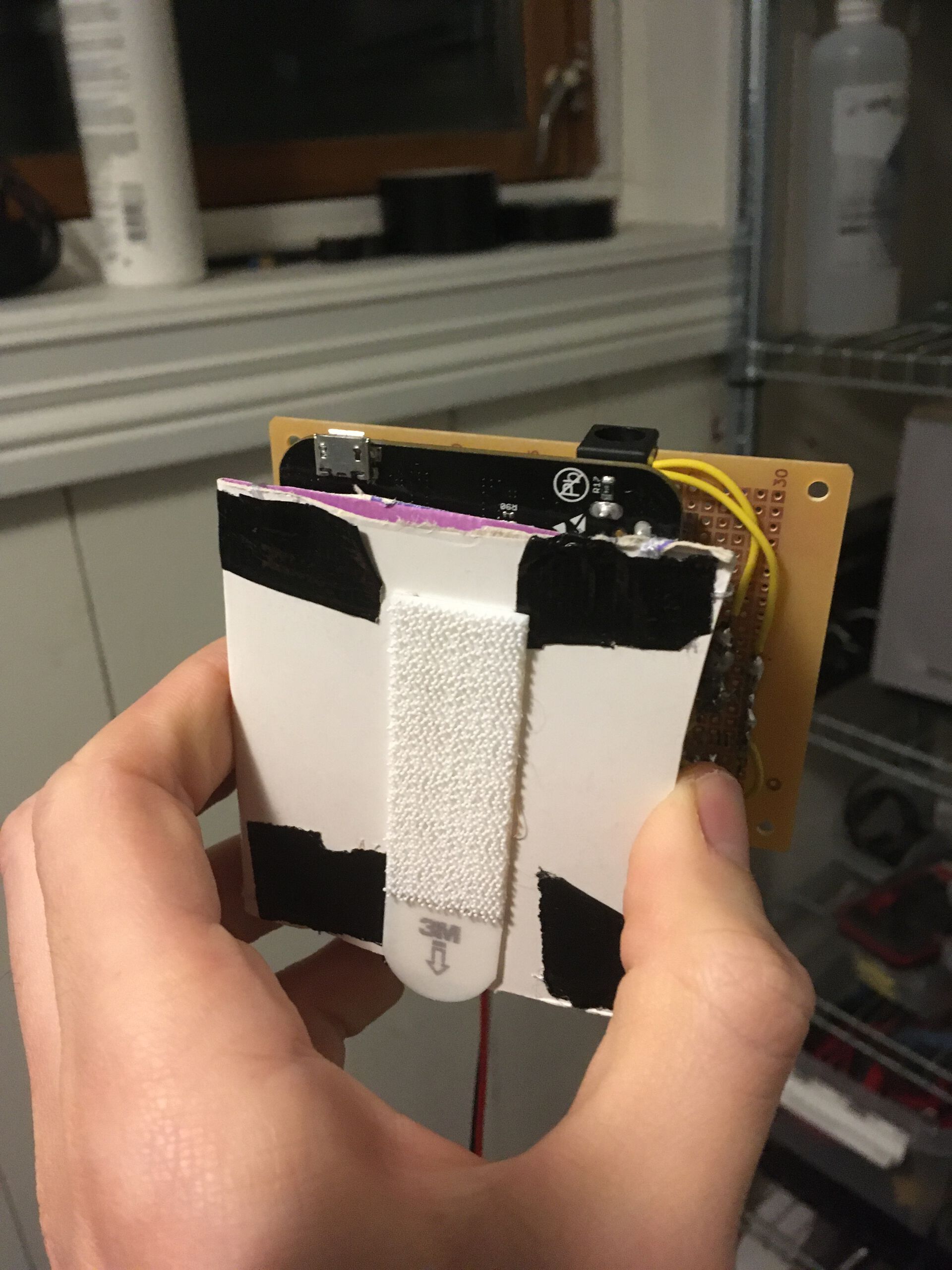SamTar
Sample-based music is no new phenomenon, and I’m no stranger to it. For me, the love for sample-based music is mostly due to 90´s French-house and the various hip-hop acts I listened to as a kid. More recently, I’ve been interested in how we usually interact and “play” with samples, often through MIDI-based beat controllers, and if there are other ways we can interact with samples that can provide new perspectives on sample-based music-making.
In light of these reflections, I decided to prototype an augmented electric guitar (SamTar) for playing and exploring sample-based music. The idea being that interacting and playing samples through a guitar interface could generate such new perspectives, and maybe a few novel affordances. The system uses a Bela micro-controller, some Pure data software and 5 sensors all mounted on the face of an electric guitar.
Design
To trigger samples on the SamTar you basically hit the only string currently available on the instrument. Simple enough. The hits do not only trigger the samples but also adjusts the gain and amplitude of the samples played. Another feature that is controlled by the main trigger mechanism is a sample-and-hold function. If you play two consecutive “notes” at a certain speed, the current sample will hold.
Sample Space
To categorize and organize samples, I created a 2D sample-space in Pure Data. The purpose of such a space was to enable easy and dynamic navigation of sample clusters from the SamTar itself. This space consists of multiple scenes (tracks) each with n-number of segments (section within a track), filled with x-number of audio files/samples. Also, as a general principle, I wanted to focus on how minimal input could control complex processes, so essentially how “one-to-many” mappings could benefit “one-man-band” type instruments (Morreale, McPherson 2019, p.2). The result was a simple button, mounted on the guitar, that skips segments and scenes when pressed.
In my prototyped version I was able to implement an LED array in p5 visually displaying the “location” of the player in the current sample-space. Optimally, this would be implemented in a physical Adafruit NeoPixel LED array mounted on the instrument itself.

Randomness
When in a segment, the system chooses a random sequence of two samples that are looped when hitting the string of the guitar. To enable a exploratory interaction I added a rotary knob (0 - 100) that adjusts the probability a trigger has of changing the current sample sequence to a new one. For instance, if the knob is at 40 the next trigger will have a 40% chance of changing the sample sequence and a 60% chance of staying on the same two samples.
Effects
For some further variation, a designed a few effects to facilitate some sound manipulation. As the players left hand is completely free during play I put a soft potentiometer on the back of the guitar neck that controls the overall pitch of the samples. Furthermore, a chorus distortion was added for the ability to go full rock n roll, enabled by a simple switch on the mounted Bela board.


Evaluation
Technically the prototyped system performed surprisingly well with negligible latency and reliable runtime. Also, the performance of the instrument indicated that the conceptual idea and intent of the system was more or less successful. With this, I mean that the balance between its “mastery range”, playability, and general interactivity was such that it warrants further exploration and prototyping. If this work is to be undertaken then several things would have to be tested and considered:
- More strings and updated sample-space control.
- It struck me that the relationship between the sample-space and the sample triggering could be optimized and extended. Maybe it would be better to keep all 6 strings, map the signal pitch to individual samples and the envelope of the signal to pitch or duration of the samples played. Or something along these lines.
- Re-develop the trigger system.
- As mentioned above, the system performed technically just fine. However, the trigger system does exhibit unwanted cut-offs and the occasional glitch which suggests re-development or improvements are in order.
- More diagnostics.
- Additionally to the proposed LED array, more diagnostic displays should be explored that give users more insight into the current state of the system.
Relevant Sources
Cook, P. R. (2006). Re-Designing Principles for Computer Music Controllers: A Case Study of SqueezeVox Maggie. in Proceedings of the 6th international conference on New Interfaces for Musical Expression.
Gonzalez Sanchez, V. E., Martin, C. P., Zelechowska, A., Bjerkestrand, K. A. V., Johnson, V., & Jensenius, A. R. (2018). Bela-Based Augmented Acoustic Guitars for Sonic Microinteraction. In Proceedings of the International Conference on New Interfaces for Musical Expression. Zenodo. https://doi.org/10.5281/zenodo.1302599
Hunt, A., Wanderley, M. M., & Kirk, R. (2000) Towards a Model for Instrumental Mapping in Expert Musical Interaction. in Proceedings of 2000 International Computer Music Conference
Morreale, F., Guidi, A., & McPherson, A. P. (2019). Magpick: An Augmented Guitar Pick for Nuanced Control. In Proceedings of the International Conference on New Interfaces for Musical Expression. Zenodo. https://doi.org/10.5281/zenodo.3672868
O’Modhrain, S. (2011). A Framework for the Evaluation of Digital Musical Instruments. Computer Music Journal, 35(1), p.28–42.
Acknowledgement
A final thanks to Paul Koenig for the lending me the guitar and Thibault Jaccard for a quick JavaScript p5 introduction.
